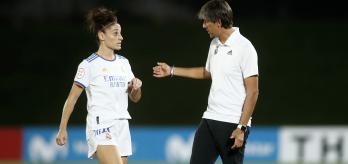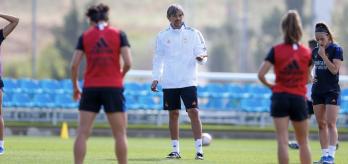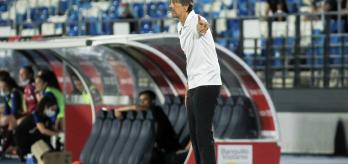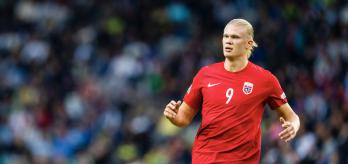When we speak about "leadership", we tend to spontaneously think about the leadership of the coach, or perhaps the team captain within a sport. The leadership of other key figures in the team is thereby often underestimated. By actively taking up leadership responsibilities, team members can play an important role in optimising the team's functioning. Moreover, the evidenced impact of team leaders on the team's effectiveness and wellbeing may move us away from the traditional approach of hierarchical leadership and embrace the idea of shared leadership.
On every team there is a core group who sets the tone for everyone else. If the tone is positive, you have half the battle won. If it is negative, you are beaten before you can even walk out on the field.
Watch presentation
Read summary
Part 1: Introduction to sports leadership and the impact of athlete leaders
Prof. Fransen makes a distinction between the two main types of leaders within a team: formal leaders (coach and captain) and informal leaders (i.e., leaders receiving their status based on natural interactions with their team-mates, such as a senior player taking the younger or less experienced players under their wing).
She then discusses the findings of her own research on athlete leaders to explain that these athlete leaders have indeed an important impact on their team members. More specifically, the quality of the athlete leaders impacted both team functioning (e.g., team confidence, cohesion, resilience, etc.), performance indicators (e.g., objective performance, performance satisfaction, team ranking, etc.), as well as health indicators (e.g., health, well-being, burnout). It is important to note that while the impact of athlete leaders can have a huge positive impact, if the wrong athlete leaders are appointed and demonstrate negative leadership behaviour, they can also have a detrimental impact on the team. The importance of identifying the right leaders in the team is therefore key, which brings us to Part 2.
Part 2: Identifying athlete leaders within a team
Prof. Fransen introduces four leadership roles within a team that can be occupied by athlete leaders, including task leadership (providing tactical guidance), motivational leadership (encouraging others to perform at their best), social leadership (creating a good atmosphere around the team), and external leadership (representing the team towards management, press and sponsors).
Although traditional expectations assume that the captain will fulfil most if not all of these roles, Prof. Fransen’s research demonstrates that the captain is only rarely perceived as the best leader for these roles by his/her team-mates. As each role requires a different skillset, and these talents are usually spread throughout the team, it is therefore recommended to distribute these roles among those athletes that are best suited for taking up this role. Prof. Fransen’s research has also shown that teams with such a structure of shared leadership have greater team confidence, share a stronger sense of team identification, and end up higher on the ranking than teams with a single leader.
Part 3: Reasons why coaches should implement shared leadership models within their teams
Prof. Fransen argues that despite the known benefits of shared leadership structures, coaches are often reluctant to implement them. This could potentially be out of fear of losing their own leadership status by empowering athlete leaders in their team. However, some of Prof. Fransen’s scientific work has shown such fears may be totally unjustified. Even on the contrary, in teams that have more shared leadership (i.e., having better task, motivational, social, and external leaders), the coaches are perceived as better leaders on each of these roles compared to coaches of teams with more hierarchical leadership.
The ideal leadership model lies somewhere between a hierarchical (coach, captain, rest of team) and self-steering (no coach) structure, where both athletes and coaches can reap the benefits of having multiple leaders, in an environment conducive to optimal player performance and where clear standards have been set by the coach. It is therefore important to look beyond the team captain to identify the real leaders within a team for each of the different leadership roles.
Part 4: The road to effective leadership
Effective leaders are usually identified, formally appointed and developed. Prof. Fransen developed the Shared Leadership Mapping analysis, which provides a more coherent view on the key leaders on the team. More specifically, after bringing together perceptions of all team members and coach, social network analysis is adopted to visualise the leadership network in the team. Based on this network and additional graphs, a detailed report is compiled, which is used as the basis for suggesting the most suitable athlete leaders to their coach and sports psychologists.
The formal appointment of leaders is key, and so is their development, particularly with regard to identity leadership skills, as their team-mates will gain in confidence and perform better if they feel a greater sense of identification with their team. In light of this, the KU Leuven team, in collaboration with their Australian partners, developed a five-step (5RS) leadership programme, which has been found to enhance the leadership skills of athlete leaders, while also improving various outcomes, such as team identification, intrinsic motivation and athletes’ health in the process.
More information on this topic, as well as on the Shared Leadership Mapping and the 5RS programme can be found on www.leadinginsights.be/en.
About the expert





















.variant64x64.png)


.variant348x164.png)

